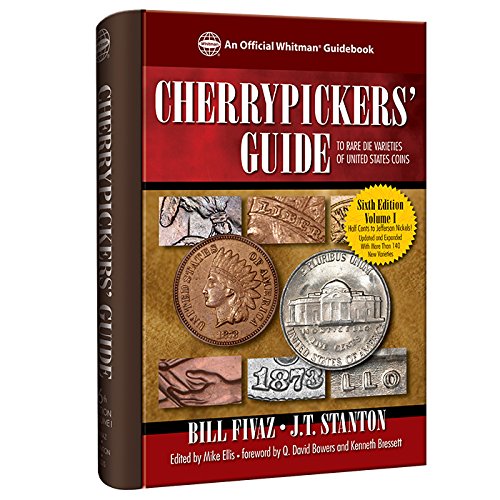Aug 2, 2018 | coins, dollar, errors, ethics, scams, US Mint, varieties
This week’s LOOK BACK is my take at the stir made over the positioning of the edge letters on the newly struck George Washington Dollar coins in 2007.
If you search the online auction sites, you will find less than honest sellers trying to sell variations in the positioning of edge lettering of the new George Washington Dollars errors or varieties. Letters that are pointed up, or the top of the letters towards the obverse, are considered “normal” by these sellers. Letters that are pointed downward, or the top of the letters closer to the reverse of the coin, have been called errors or varieties. They are neither.
Exasperating the issue is that one third-party grading service added a designation to their labels with the orientation of the edge lettering.
-
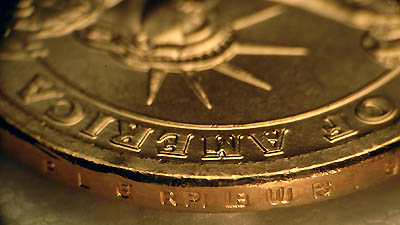
-
According to one third-party grading service, Presidential Dollars With The Tops The
Edge Lettering Facing the Reverse Are Designated As “Position A.”
-
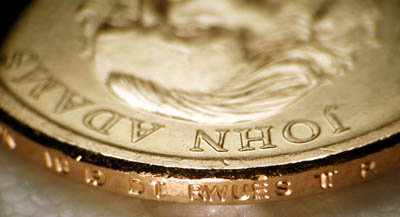
-
Those With The Tops Of Their Letters Facing The Obverse Are “Position B.”
An accepted definition of a variety “is any variation in the normal design of a given coin, usually caused by errors in the preparation or maintenance of the coin dies.” They are also errors caused in the striking process. But these definitions do not account for the differences in the orientation. The problem is that after the planchets are struck into coins by the high-speed coining machines, they are mechanically collected and fed into a machine that will press the lettering into the edge of the coins.
The machine that adds the edge lettering uses a three-part collar to impress the incuse lettering does this without regard to position. not only could the edge lettering face any direction, but the lettering can appear at any position along the edge. The U.S. Mint confirms this by saying that because of “the minting process used on the circulating coins, the edge-incused inscription positions will vary with each coin.”
Since the Mint is saying that the process can vary, these variations are normal for the design. Since these are normal variations, they are not numismatic varieties or errors. Thus, the coins with variations of orientation edge lettering are not worth the premiums being sought online. They are worth their face value of $1.
There have been errors found with the edge lettering. The most infamous has been called the “Godless Dollars” for coins missing their edge lettering and the motto “In God We Trust.” Most of these coins were minted in Philadelphia and discovered in Florida. Others have found doubling of edge letters and what looks like breaks in the three-part collars where letters have moved out of place. These are legitimate errors and worth a premium above face value. Orientation variations of the edge lettering are not errors.
If you want to consider these varieties, please save your money and visit your local bank. You can purchase these coins for face value without shipping and handling fees. If you purchase a 25-coin roll, you can spend the coins you do not want since they are legal tender.
The original article can be read
here.
Jul 13, 2017 | education, errors, US Mint, varieties
This is second article of a 2 part series:
A variety is a coin that differs from its basic design type in some distinctive way and is thus differentiated by collectors. Varieties are not errors. They are deliberate changes to the design whether it is to better define the design, adjust the design to strike better, or to add or change elements like dates and mintmarks.
A key difference between a variety and an error is that varieties are replicated for multiple strikes. Die changes, repunched mintmarks, repunched dates and over polishing of dies can reproduce the variety for the life of the die or until it is detected by Mint workers.
Nearly every series of coins has its own traceable die varieties that have been studied and catalogued by researchers. Researchers assign the varieties a number that is used by the third-party grading services to provide attribution to the variety on their holder.
-
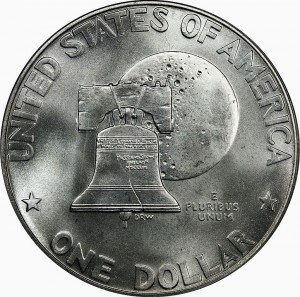
-
Bicentennial Dollar Type 1 (1975) Reverse
-

-
Bicentennial Dollar Type 2 (1976) Reverse
-
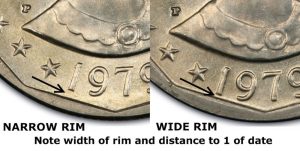
-
1979 Susan B Anthony Varieties
Variety collecting is a very specialized subject. If you are going to collect varieties, you should read the references to understand the characteristics of the varieties. Some of the more well recognized and documented varieties include:
| Catalog |
Coin Series |
Main or Initial Reference |
| Cohen (C#) |
Half Cents (1793-1857) |
American Half Cents – The “Little Half Sisters” by Roger S. Cohen, Jr. |
| Sheldon (S#) |
Large Cents (1793-1814) |
Penny Whimsy by Dr. William H. Sheldon |
| Fortin (F#) |
Liberty Seated Dimes (1837-1891) |
Liberty Seated Dimes – Die Varieties, 1837 – 1891, by Gerry Fortin |
| Overton (O#) |
Half Dollars (1794-1836) |
Early half dollar die varieties, 1794-1836, by Al C. Overton and Donald L. Parsley |
| Van Allen-Mallis (VAM#) |
Morgan and Peace Dollars (1878-1935) |
Comprehensive Catalog and Encyclopedia of Morgan & Peace Dollars, by Leroy Van Allen and A. George Mallis |
| Fivaz-Stanton (FS#) |
Varieties from the Cherrypickers’ Guide |
Cherrypickers’ Guide to Rare Die Varieties of United States Coins, by Bill Fivaz and J.T. Stanton |
Arguably, the most collected series by varieties are Morgan Dollars. VAM varieties and catalog numbers were introduced to the hobby by Leroy Van Allen and A. George Mallis who discovered the varieties while examining Morgan and Peace Dollars. Their book, Comprehensive Catalog and Encyclopedia of Morgan & Peace Dollars began a hunt that has seen hundreds of more varieties found and cataloged.
Most VAM varieties cannot be seen without magnification and detailed knowledge of what to look for. The primary resource for VAM collectors is the VAMworld website. Aside from listing the identified VAM varieties, there are instructions how to identify VAM varieties.
-
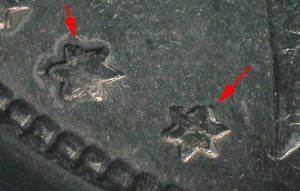
-
1878-P VAM-169 Quadrupled Stars (courtesy of VAMworld)
-
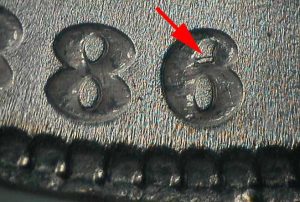
-
1886-P VAM-1A Line in 6, Slightly Doubled Ear (Image courtesy of VAMworld)
-

-
1921-S VAM-6A Doubled Stars & Motto & Upper Reverse, Die Scratch (Image courtesy of VAMworld)
The third-party grading services have an optional service that will identify VAM varieties on their holders. However, they do not recognize all VAM varieties. There are three sub-lists of catalogued VAM varieties that are recognized. These varieties are as follows:
- TOP 100: The 100 most significant VAM Varieties known
- HOT 50: A list of additional 50 VAM Varieties that collectors are interested in finding. Many of these varieties are scarce and have sold for significant premiums
- HIT LIST 40: A list of 40 new VAM Varieties that have been discovered since the publishing of the HOT 50 list
General searching for varieties and errors should consider picking up a copy of Cherrypickers’ Guide to Rare Die Varieties of United States Coins by Bill Fivaz and J.T. Stanton. The book comes in two volumes. Volume 1 covers die varieties of half cents through nickel five-cent pieces. Volume 2 covers everything else including gold and bullion issues.
Jul 12, 2017 | coins, education, errors, US Mint, varieties
This is first article of a 2 part series:

FDR dime struck on a nail (stand in for Festivus Pole)
A basic rule of thumb is that even though errors and varieties represent changes to the basic design of the coin, they differ in how they occur and the resulting appearance of the coin.
A Mint Error is the result of an issue with the manufacturing processes causing the coin to be damaged in some way. Errors can be the result in malfunction of the equipment, imperfect coining materials, or created by human error.
Even though modern equipment is supposed the make the striking process more consistent, when the manufacturing process involves striking billions of coins, there are bound to be a few errors. Coining machines have so many moving parts and everything has to work in concern, one variation in speed, force, vibration, or tilt can make the coins look very different than intended.
Then there is the human factor. Humans are imperfect beings subject to making mistakes. Even though the machines are supposed to help guide the humans to reduce mistakes, something can go wrong, especially in an operation that involves making billions of the product.
To help understand where some of the mint errors come from, they can be categorized as three different types: Planchet Errors, Die Errors, and Strike Errors.
Planchet Errors

1943 Lincoln cent struck on a copper planchet (Courtesy of CoinTrackers)
clipped planchet: Term used to describe a planchet that may have been cut incorrectly from the metal sheet. The clipped area may be curved if cut into the area where another planchet was cut out or straight if cut beyond the edge of the metal strip.
delamination: A form of planchet flaw caused by imperfections in the metal whereby a thin strip of the metal separates itself from the coin.
lamination or planchet flaw: Lamination is a type of error in the planchet that occurs when a thin layer of the metal splits or peals away from the surface of the coin.
off metal or wrong planchet: A type of error that occurs when a coin is struck on a planchet that it is not normally struck, such as striking of a quarter on a planchet that was supposed to be for a nickel.
Die Errors
A Die Error describes a defect caused by a flaw in the dies used to strike the coin. Types of Die Errors include:
cud: The area of a coin struck by a die that has a broken area across part of its surface. The result appears as a blob of metal on the surface of the coin.
die break or die crack: Fine raised lines can appear across the coin when something causes the die to break or crack. A cracked die opens a fine line in the design allowing the flow of metal to fill in the space when struck.
filled die: A type of error that appears on a coin when a foreign substance, such as grease, fills the elements of a die used to strike coins. A filled die error can also occur when the dies are polished to remove debris during the striking process. Modern minting processes have eliminated the polishing of dies but the problems with filled dies continue.
hub doubling: Refers to the doubling of the elements on a coin that was caused by the hub being pressed more than once into a die in different angles. Hub doubling occurs prior to the striking process when the dies are created. Master hubs are pressed into the dies to create working dies for the coining process. Mistakes in this process can result in the production of many coins with the error struck into them.
mule: A mule is a type of mint error that occurs when a coin is struck with two dies that were not intended to be used together.
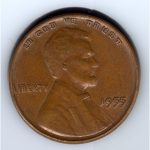
1955 DDO Lincoln Cent

1937-D 3-Legged Buffalo Nickel
The 1937-D Three-Legged Buffalo nickel occurred when a mint worker polished the reverse die of the Buffalo nickel too aggressively without checking his work. The result was the front-right leg of the buffalo being eliminated from the die. A few thousand were created before the Mint officials figured out they had a problem.
Strike Errors

Off-center 50 States quarter struck in Denver
broad strike: A coin that is struck in a way that expands beyond the boundaries of the collar. A broad strike can give the coin n flat or elongated look.
brockage: A type of striking error when the coin is not ejected properly from the press and causes the mirror image of the exposed design to be struck on the next coin.
capped die: An error in which a coin gets stuck on a die and remains stuck for successive strikes. Eventually, the coin forms a “cap” on the die and imparts its image on coins it strikes. When the cap falls off, it usually resembles a small bowl.
clashed die: One of the more interesting errors occurs when during the striking process, a malfunction prevents a planchet from being in place when the dies are forced together causing them to crash into each other. This leaves the design from either side on the other. Subsequent coins are then struck with the latent image of the other side pressed into the coin.
cracked die: An error that occurs when during the stress of striking coins, the die cracks across its face. When a cracked die strikes a coin, the metal flows into the crack that impresses a raised area in the coin that is not part of the design.
filled die: A type of error that appears on a coin when a foreign substance, such as grease, fills the elements of a die used to strike coins.
incomplete strike: A coin that is missing design detail because of a problem during the striking process.
misaligned dies: A striking error caused by one or both dies not set properly in the coining machine or worked loose during striking.
multiple-struck: A type of mint error when the coin was struck more than once. A multiple-struck coin can show the design as it is struck in multiple places.
off-center strike: During the striking process, the coin is not seated in the right place in the area over the anvil (lower) die causing the coin’s design to not be properly centered on the coin.
overstrike: A type of minting error when a coin, token or medal is struck on a previously struck coin, token or medal.
partial collar strike: A type of striking error where a planchet does not enter completely into coining position and is struck partly within the collar and partly outside.
rotated dies: A type of mint error caused by the dies not being aligned when striking the coin, token or medal.

1999-P Georgia state quarter double struck and off center.
strike doubling or doubled strike: A coin that is struck more than once while in the coining machine resulting in doubling of design elements. Double strikes are different from hub doubling in that this type of error is a mechanical failure within the coining machine whereas hub doubling happens before striking. Double strike errors are rarer than hub doubling.
weak strike: refers to a coin that does not show its intended detail because of low striking pressure or improperly aligned dies.
When going to coin shows you can see some of the most fantastic errors. Some boggle the mind how they were done and how they escaped the U.S. Mint. Dealers whose concentration are errors do not reveal their secrets but I have been told that some have contacts with some of the security companies that haul money on behalf of the banks.
This topic is not complete until we talk about varieties. That will be the next post.
Jun 28, 2017 | coins, dollar, US Mint, varieties
This is Part 2 of a 4 part series:
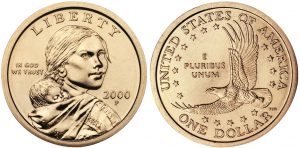
2000 Sacagawea Dollar
Since there are no known images of Sacagawea, Goodacre searched for someone she could model her design on. Goodacre found Randy’L He-Dow Teton is a member of the Shoshone-Cree tribe to be the model. Teton was a student at the University of New Mexico majoring in art history and was working for the Institute of American Indian Arts Museum in Santa Fe when Goodacre visited looking for Shoshone woman to be her model.

The unveiling of the Sacagawea Dollar design at the White House with (L-R) First Lady Hillary Clinton, Sacagawea Model Randy’L He-dow Teton, and Designer Glenna Goodacre.
The reverse was a beautiful flying eagle designed by Thomas D. Rogers. The original Sacagawea dollar was produced from 2000-2008 with the only changes in the treatment of the coin to prevent toning.

The 2000 Cheerios Dollar
There have been stories of estate finds where the coin was selling for under $100. Most of the time the coin has been encased in a third-party grading service holder and selling in excess of $4,500. Finding them in the original package as they were part of the Cheerios box would be a great find.
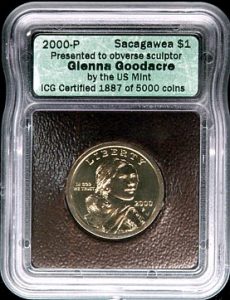
A Goodacre Dollar encapsulated by ICG
A special issue was struck in 1999 in 22-karat gold in an attempt to convince congress to authorize their sale. On twelve have survived and they sent into space aboard Columbia on mission STS-93 in July 1999. The U.S. Mint reports that the coins are stored in the U.S. Bullion Depository at Fort Knox, Kentucky. Anyone selling gold Sacagawea dollars is likely selling a gold-pated coin that is not a genuine finish by the U.S. Mint.
In the next installment, we look at the Native American dollar series.
Credits
- Sacagawea Dollar image a composit of images from the U.S. Mint.
- Image of unveiling courtesy of USA Coinbook.
- Cheerios Dollar image courtesy of user Yokozuna at the Coin Community Forum.
- Image of the Goodacre Dollar courtesy of ICG.
Jun 20, 2017 | coins, varieties
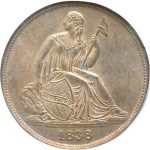
1838-O Seated Liberty Dime
Most of what I know about Seated Liberty Dimes are from references like the Red Book. Of course, that is not enough information to write for an entire article, so I went searching for a better reference when I came upon the work by Gerry Fortin. Fortin’s site, seateddimevarieties.com, is the result of his work in understanding all of the varieties of Seated Liberty Dime since he began researching these varieties in 1988.
Fortin’s research documents over 100 different die varieties which he cataloged on his website. He reports that there are 200 date and mintmark varieties when including errors, re-punched dates, or other anomalies. Fortin’s catalog numbers are used by the third-party grading services to identify varieties on their holders. This is the definitive reference for Seated Liberty Dime varieties! If you are interested in the detail of Seated Liberty Dime varieties, you should bookmark seateddimevarieties.com. But for the general numismatist, aspects of his work should be merged with the mainstream.
In most of the numismatic references, including what I had included on the U.S. Coins by Type page, there are five major varieties of Seated Liberty Dimes:
- Type 1: No Stars on Obverse (1837-1838)
- Type 2: Stars on Obverse (1838-1853, 1856-1860)
- Type 3: Arrows at Date (1853-1855)
- Type 4: Legend on Obverse (1860-1873, 1875-1891)
- Type 5: Arrows at Date (1873-1874)
Using Fortin’s research, if you consider changes in the design a new major type, there should be three additional varieties. Fortin documents these as one of the major design groups. One variety not included in the mainstream publications is the addition of drapery by Liberty’s left hand. This would split the old Type 2 varieties into two.
The change in 1860 that moves the legend “UNITED STATES OF AMERICA” to the obverse of the coin. On the reverse, the laurel wreath was changed to a wreath composed of cotton, tobacco, sugar cane, corn, wheat and oak leaves enclosing the denomination of “ONE DIME” that was created in a larger font. The wreath is sometimes called “Newlin’s Wreath of Cereal” after Harold P. Newlin, a prominent numismatist of his day, who was said to have suggested the idea of the wreath to then U.S Mint Director James Ross Snowden. The updated design was created by James B. Longacre.
-

-
1660 Seated Liberty Dime Legend on Obverse [Type I]
-

-
1860 Seated Liberty Dime “Wreath of Cereal” Reverse [Type I]
Further splitting the old Type 4 began in 1861 when the hubs were fixed to improve the striking quality of the coin. Liberty was given a thinner appearance and the number of lines on the shield above “LIBERTY” was increased to six lines. This is known as a Type II Obverse with a Type I reverse.
When the weight of the coin was changed as part of the Crime of ’73, arrowheads were added to either side of the date of the Type 4 design for a two-year period. Since the arrows were punched directly into the dies, their exact position can vary. Once the new design was released, the U.S. Mint began melting down coins dated 1873 that did not have arrows.
There were some dimes that slipped through the melting process. Dimes from the Carson City Mint were missed which today is considered of the most famous of all 19th-century rarities, the 1873-CC No Arrows Seated Liberty Dime.
-
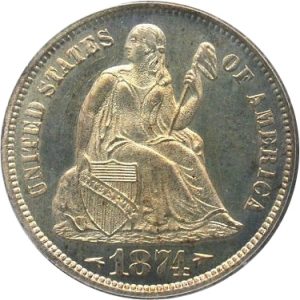
-
1874-S Seated Liberty Dime with Legend on Obverse [Type II] and Arrows around the Date
-
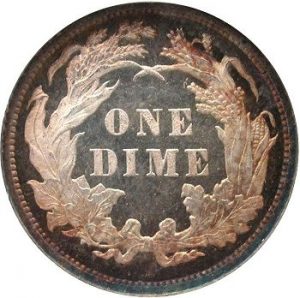
-
1889 Seated Liberty Dime William Barber “Wreath of Cereal” Reverse [Type II]
Chief Engraver William Barber redesigned the reverse dies in 1876 to improve striking. Although similar to the “Newlin’s Wreath of Cereal” design, there are enough subtle differenced for Fortin to call this a Type II Reverse. Fortin notes that Type I and Type II reverses were used for striking coins from 1876 to 1878 except for 1877 in San Francisco. There have been no reported examples of Type I reverse coins struck in San Francisco during 1877.
After reading Fortin’s reference I decided that Seated Liberty Dimes should note that there are eight varieties instead of the five noted in other publications. This would be for collectors looking to build an interesting typeset of Seated Liberty Dimes. This is why I updated the Seated Liberty Dime entry on my U.S. Coins by Type page as follows:
- Type 1: No Stars on Obverse (1837-1838)
- Type 2: Stars on Obverse, No Drapery Under Right Elbow (1838-1840)
- Type 3: Stars on Obverse, With Drapery Under Right Elbow (1840-1860)
- Type 4: Type 3 design with Arrows around Date (1853-1855)
- Type 5: Legend on Obverse [Type I], Longacre “Wreath of Cereal” Reverse [Type I] (1860-1861)
- Type 6: Legend on Obverse [Type II], “Wreath of Cereal” Reverse [Type I] (1861-1873, 1875-1878)
- Type 7: Type 6 design with Arrows around the Date (1873-1874)
- Type 8: Legend on Obverse [Type II], W. Barber “Wreath of Cereal” Reverse [Type II] (1876-1891)
This has now inspired me to look into other early varieties and update my online reference accordingly. Although it will not go into the detail of the research, giving the collector more information is better than just glossing over a topic.
All Seated Liberty Dime images courtesy and copyright by
Gerry Fortin.
Oct 20, 2015 | Canada, cents, coins, other, varieties
It has been a very interesting few weeks since my last post. During that time there was a lot of business activity that I hope will allow be to have more time to do some of the things I would rather be doing, like write. Aside from the blog, I have 95-percent of a collecting-related ebook completed and 80-percent of a different sort of book completed. In between business meetings, I was able to start a book I am tentatively calling “Why did the Mint do that?” which may include information about why the Bureau of Engraving and Printing does what it does including a section on the history of counterfeit detection in the United States.
In the mean time, I have started several posts in the same style that I have been writing for the last few years. Until I can make more time, some long-form tomes will have to wait. Instead of taking the time to write longer items, I will look to write shorter posts including in multiple parts, depending on the topic. This way, I can clear the list of ideas I have been saving.
One more bit of housekeeping before I talk about my new collection: you might see a page that says that I am working on an update. I decided that the blog needs a new look and that periodically, I will work on a theme change. Hopefully, I can finish by the end of the month, but you never know!
That being said, I also had taken the time to start a new collection. While I wanted to start something new for a while and had an idea for a direction, I did not have the opportunity until now.
Earlier this month I attended a local coin show in Westminster, Maryland. Westminster could be considered a distant suburb of Baltimore with a big firehall that housed this show. Although I was there to man the front table representing the Maryland State Numismatic Association as its president greeting people, I was able to slip inside to look around. One of the tables had binders with foreign coins and I started to look.
Grabbing the one for Canada, I remembered that the first official coinage of the Province of Canada. In 1840, the British Parliament passed the Act of Union that merged the upper and lower colonies of Canada into the single Province of Canada. As a province, Canada was able to form a more independent government, even though it was answerable to the Crown. Answering to political dissension that was building in the province, Queen Victoria named Ottawa as the province’s capital. Although the province government met in Ottawa anyway, this was a symbolic move.
One of the problems was the lack of circulating currency. Even though the monarchs loosened the rules on circulating coinage in Canada, there was a need for a larger supply. Even though the Province of Canada’s parliament passed legislation to adopt a decimal coinage, Queen Victoria finally recognized the request. As part of trying to maintain order in the province, Victoria ordered the Royal Mint to produce coinage for Canada starting in 1858.
Canadian large cents with the effigy of Queen Victoria are affectionately called Vickie Cents. With the recent elimination of the one cent coin, looking back at the Canadian cent through its history has become popular with Canadian coin collectors. The key date for Vickie Cents is the first year, 1858 coin.
At mid-grade the 1858 Vickie cent is not that expensive. Although they are harder to find, the demand keeps the price reasonable for the average collector. Although I have been thinking about starting a Vickie cent collection for a while but when I found one in this dealer’s binder, I could not resist!Based on the description in the Charlton Standard Catalog of Canadian Coins, the coin would be graded around F-12. But since it is the first year of issue and the general rule is to buy the best you can afford, this was how I was going to make my start with Vickie cents.
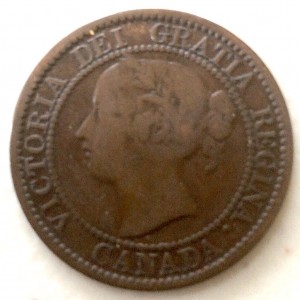
1858 Province of Canada Large Cent (Vickie Cent) obverse
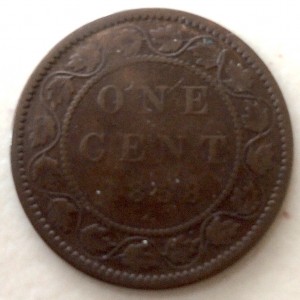
1858 Province of Canada Large Cent (Vickie Cent) reverse
Since I was there I decided that even though it was not the first year of issue, I would pick up the last year of issue. Since Queen Victoria died in January 1901, that was the last year her image appeared on coins in the British Commonwealth. I picked out a nice extra fine example to mark the beginning and end of the series.
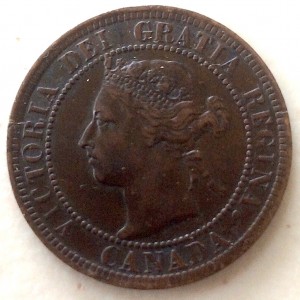
1901 Dominion of Canada Large Cent obverse (Last year of Victoria Cent)
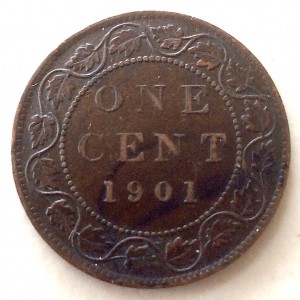
1901 Dominion of Canada Large Cent reverse (Last year of Victoria Cent)
Vickie cents were produced in 1858 and 1859 with a few distinguished varieties. One notable variety is the 1858 coin-aligned reverse. At the time it was the Royal Mint’s practice to have coins aligned in what we call today “medal alignment” where the top of the obverse and reverse point in the same direction. An error at the mint created a rarer coin-aligned (tops on opposite ends) coin. In 1859 there were overstrikes, doubled numbers, alignment differences, and composition differences. If I were to look for all of the known varieties, the cost of the 1859 with a Narrow 9 made of brass (not bronze) would cost about as much as a 1914-D Lincoln cent and be much more difficult to find.
The cents of 1858-1859 were minted in enough quantity to keep the Canada stocked with cent until 1876. New portrait, and varieties, were introduced as well as a striking at the Birmingham Mint, also known as the Heaton Mint, along side the British halfpenny, which used the same planchet. Coins struck at the Heaton Mint were given the “H” mint mark.
Foreign coin collecting can be an adventure that may not be as expensive as their U.S. counterparts. If you are collecting for fun, as I am, pick a country, learn a little about the history, and pick a series to collect. I picked Canada because my wife’s family is from the Province of Québec. Not only will you find it a challenge, but the lower demand may make your endeavor more affordable.
Stay tuned for more!
Apr 13, 2008 | auction, coins, varieties
For those interested in collecting the finest VAM varieties of Morgan Dollars, Heritage Auction Galleries will be auctioning some of Leroy Van Allen’s collection of varieties. The auction will be this week their Central States Numismatic Society Convention Signature Auction and is available for bidding online.
Mar 14, 2007 | coins, dollar, grading, varieties
ANACS, the oldest certification service, has now published their population report. The report is accessible via the web and requires a free user account. Their population report not only includes the standard varieties, but also a listing of all of the errors of a particular type. For example, a search of 1976-P Type 2 Eisenhower Dollars shows that ANACS has graded Broadstruck, Clip, Double Clip, Double Struck, Die Adjustment Strike, Indent, Off-Center, Partial Collar, Split Planchet, Struck Thru, and Struck Thru Grease errors. I like that!
ANACS is also offering grading of Washington Dollars for $8 through March 31, 2007. There is a 10 coin minimum for their 10 day grading service. I may buy a roll from the bank and see what I can send to ANACS for grading because this is a good deal!
Mar 8, 2007 | coins, dollar, errors, scams, varieties
If you search the online auction sites, you will find less than honest sellers trying to sell variations in the positioning of edge lettering of the new George Washington Dollars errors or varieties. Letters that are pointed up, or the top of the letters towards the obverse, are considered “normal” by these sellers. Letters that are pointed downward, or the top of the letters closer to the reverse of the coin, have been called errors or varieties. They are neither.
An accepted definition of a variety “is any variation in the normal design of a given coin, usually caused by errors in the preparation or maintenance of the coin dies.” They are also errors caused in the striking process. But these definitions do not account for the differences in the orientation. The problem is that after the planchets are struck into coins by the high speed coining machines, they are mechanically collected and fed into a machine that will press the lettering into the edge of the coins.
The machine that adds the edge lettering uses a three part collar to impress the incuse lettering does this without regard to position. not only could the edge lettering face any direction, but the lettering can appear at any position along the edge. The US Mint confirms this by saying that because of “the minting process used on the circulating coins, the edge-incused inscription positions will vary with each coin.”
Since the Mint is saying that the process can vary, these variations are normal for the design. Since these are normal variations, they are not numismatic varieties or errors. Thus, the coins with variations of orientation edge lettering are not worth the premiums being sought online. They are worth their face value of $1.
There have been errors found with the edge lettering. The most infamous has been called the “Godless Dollars” for coins missing their edge lettering and the motto “In God We Trust.” Most of these coins were minted in Philadelphia and discovered in Florida. Others have found doubling of edge letters and what looks like breaks in the three-part collars where letters have moved out of place. These are legitimate errors and worth a premium above face value. Orientation variations of the edge lettering are not errors.
If you want to consider these varieties, please save your money and visit your local bank. You can purchase these coins for face value without shipping and handling fees. If you purchase a 25-coin roll, you can spend the coins you do not want since they are legal tender.








